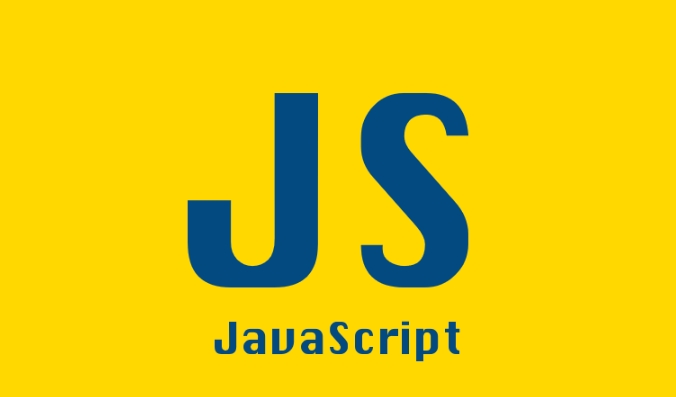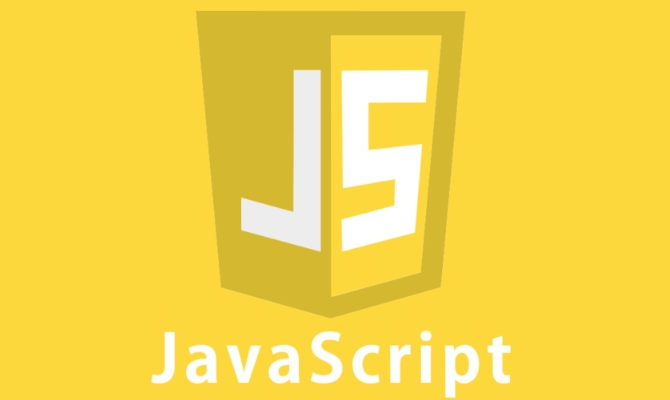React Native allows writing cross-platform mobile applications in JavaScript and React to achieve one-time development and multi-end operation; 2. Core advantages include single code base, near-native performance, hot reload, strong ecology and cost-effectiveness; 3. It is recommended that novices use Expo to quickly start, and advanced users can use React Native CLI to obtain more control; 4. Daily development requires mastering components, styles, state management, navigation and platform adaptation; 5. Pay attention to performance optimization, native module requirements, package size control and test coverage to avoid common pitfalls.

If you're looking to build mobile apps that run smoothly on both iOS and Android without writing two separate codebases, React Native is one of the best tools available today . Developed by Meta (formerly Facebook), it lets you use JavaScript and React — technologies many web developers already know — to create truly native-like mobile experiences.

Here's what makes React Native a strong choice and how to get started effectively:
? Why React Native?
- Single Codebase : Write once, run on both platforms — with minimal platform-specific tweaks.
- Near-Native Performance : Uses native components under the hood (not web views), so apps feel fast and responsive.
- Live/Hot Reloading : See changes instantly during development — huge time-saver.
- Strong Ecosystem : Huge community, rich libraries (like React Navigation, Redux, Axios), and solid tooling (Expo, Metro).
- Cost-Effective : One team can maintain both iOS and Android versions.
?? Key Tools & Setup
- Node.js npm/yarn – Required for package management.
- React Native CLI or Expo
- Use Expo if you're new or want faster setup (no native code needed at first).
- Use React Native CLI for more control (eg, custom native modules).
- Android Studio / Xcode – For building and testing on real devices or emulators.
Tip: Start with Expo Go for protesting — it lets you test on your phone via QR code instantly.

? Core Concepts You'll Use Daily
- Components : Just like React —
View,Text,Image,Button, etc., map to native UI elements. - Styles : Similar to CSS but uses JavaScript objects (
StyleSheet.create()). - State Management : Use React's
useState,useEffect, or Redux/Zustand for complex apps. - Navigation : React Navigation is the go-to library — handles stacks, tabs, drawers.
- Platform-Specific Code : Use
Platform.OS === 'ios'or.ios.js/.android.jsfile extensions when needed.
? Common Gotchas (and How to Avoid Them)
- Performance on Complex UIs : Avoid inline styles and heavy re-renders. Use
React.memoanduseCallback. - Native Modules : Some features (like Bluetooth, advanced camera) may require native code — plan for this early.
- App Size : React Native apps can be larger than pure native ones (~20–30 MB base). Use Hermes (JS engine) and enable ProGuard/Release optimizations.
- Testing : Jest for unit tests, Detox or Appium for E2E — don't skip this!
? Real-World Use Cases
Big companies like Facebook, Instagram, Shopify, and Discord use React Native in production. It's mature enough for:
- MVPs and startups (fast iteration)
- Enterprise apps (with proper architecture)
- Cross-platform features (shared logic UI)
Bottom line : React Native isn't perfect for every app (eg, heavy graphics/games might need Flutter or native), but for most business apps — it's fast, flexible, and future-proof.
Start small, use Expo, and scale up as needed. You'll be shipping on both platforms faster than you think.

The above is the detailed content of Building Cross-Platform Mobile Apps with React Native. For more information, please follow other related articles on the PHP Chinese website!

Hot AI Tools

Undress AI Tool
Undress images for free

Undresser.AI Undress
AI-powered app for creating realistic nude photos

AI Clothes Remover
Online AI tool for removing clothes from photos.

Clothoff.io
AI clothes remover

Video Face Swap
Swap faces in any video effortlessly with our completely free AI face swap tool!

Hot Article

Hot Tools

Notepad++7.3.1
Easy-to-use and free code editor

SublimeText3 Chinese version
Chinese version, very easy to use

Zend Studio 13.0.1
Powerful PHP integrated development environment

Dreamweaver CS6
Visual web development tools

SublimeText3 Mac version
God-level code editing software (SublimeText3)
 How to make an HTTP request in Node.js?
Jul 13, 2025 am 02:18 AM
How to make an HTTP request in Node.js?
Jul 13, 2025 am 02:18 AM
There are three common ways to initiate HTTP requests in Node.js: use built-in modules, axios, and node-fetch. 1. Use the built-in http/https module without dependencies, which is suitable for basic scenarios, but requires manual processing of data stitching and error monitoring, such as using https.get() to obtain data or send POST requests through .write(); 2.axios is a third-party library based on Promise. It has concise syntax and powerful functions, supports async/await, automatic JSON conversion, interceptor, etc. It is recommended to simplify asynchronous request operations; 3.node-fetch provides a style similar to browser fetch, based on Promise and simple syntax
 React vs Angular vs Vue: which js framework is best?
Jul 05, 2025 am 02:24 AM
React vs Angular vs Vue: which js framework is best?
Jul 05, 2025 am 02:24 AM
Which JavaScript framework is the best choice? The answer is to choose the most suitable one according to your needs. 1.React is flexible and free, suitable for medium and large projects that require high customization and team architecture capabilities; 2. Angular provides complete solutions, suitable for enterprise-level applications and long-term maintenance; 3. Vue is easy to use, suitable for small and medium-sized projects or rapid development. In addition, whether there is an existing technology stack, team size, project life cycle and whether SSR is needed are also important factors in choosing a framework. In short, there is no absolutely the best framework, the best choice is the one that suits your needs.
 JavaScript Data Types: Primitive vs Reference
Jul 13, 2025 am 02:43 AM
JavaScript Data Types: Primitive vs Reference
Jul 13, 2025 am 02:43 AM
JavaScript data types are divided into primitive types and reference types. Primitive types include string, number, boolean, null, undefined, and symbol. The values are immutable and copies are copied when assigning values, so they do not affect each other; reference types such as objects, arrays and functions store memory addresses, and variables pointing to the same object will affect each other. Typeof and instanceof can be used to determine types, but pay attention to the historical issues of typeofnull. Understanding these two types of differences can help write more stable and reliable code.
 JavaScript time object, someone builds an eactexe, faster website on Google Chrome, etc.
Jul 08, 2025 pm 02:27 PM
JavaScript time object, someone builds an eactexe, faster website on Google Chrome, etc.
Jul 08, 2025 pm 02:27 PM
Hello, JavaScript developers! Welcome to this week's JavaScript news! This week we will focus on: Oracle's trademark dispute with Deno, new JavaScript time objects are supported by browsers, Google Chrome updates, and some powerful developer tools. Let's get started! Oracle's trademark dispute with Deno Oracle's attempt to register a "JavaScript" trademark has caused controversy. Ryan Dahl, the creator of Node.js and Deno, has filed a petition to cancel the trademark, and he believes that JavaScript is an open standard and should not be used by Oracle
 Handling Promises: Chaining, Error Handling, and Promise Combinators in JavaScript
Jul 08, 2025 am 02:40 AM
Handling Promises: Chaining, Error Handling, and Promise Combinators in JavaScript
Jul 08, 2025 am 02:40 AM
Promise is the core mechanism for handling asynchronous operations in JavaScript. Understanding chain calls, error handling and combiners is the key to mastering their applications. 1. The chain call returns a new Promise through .then() to realize asynchronous process concatenation. Each .then() receives the previous result and can return a value or a Promise; 2. Error handling should use .catch() to catch exceptions to avoid silent failures, and can return the default value in catch to continue the process; 3. Combinators such as Promise.all() (successfully successful only after all success), Promise.race() (the first completion is returned) and Promise.allSettled() (waiting for all completions)
 What is the cache API and how is it used with Service Workers?
Jul 08, 2025 am 02:43 AM
What is the cache API and how is it used with Service Workers?
Jul 08, 2025 am 02:43 AM
CacheAPI is a tool provided by the browser to cache network requests, which is often used in conjunction with ServiceWorker to improve website performance and offline experience. 1. It allows developers to manually store resources such as scripts, style sheets, pictures, etc.; 2. It can match cache responses according to requests; 3. It supports deleting specific caches or clearing the entire cache; 4. It can implement cache priority or network priority strategies through ServiceWorker listening to fetch events; 5. It is often used for offline support, speed up repeated access speed, preloading key resources and background update content; 6. When using it, you need to pay attention to cache version control, storage restrictions and the difference from HTTP caching mechanism.
 Leveraging Array.prototype Methods for Data Manipulation in JavaScript
Jul 06, 2025 am 02:36 AM
Leveraging Array.prototype Methods for Data Manipulation in JavaScript
Jul 06, 2025 am 02:36 AM
JavaScript array built-in methods such as .map(), .filter() and .reduce() can simplify data processing; 1) .map() is used to convert elements one to one to generate new arrays; 2) .filter() is used to filter elements by condition; 3) .reduce() is used to aggregate data as a single value; misuse should be avoided when used, resulting in side effects or performance problems.
 JS roundup: a deep dive into the JavaScript event loop
Jul 08, 2025 am 02:24 AM
JS roundup: a deep dive into the JavaScript event loop
Jul 08, 2025 am 02:24 AM
JavaScript's event loop manages asynchronous operations by coordinating call stacks, WebAPIs, and task queues. 1. The call stack executes synchronous code, and when encountering asynchronous tasks, it is handed over to WebAPI for processing; 2. After the WebAPI completes the task in the background, it puts the callback into the corresponding queue (macro task or micro task); 3. The event loop checks whether the call stack is empty. If it is empty, the callback is taken out from the queue and pushed into the call stack for execution; 4. Micro tasks (such as Promise.then) take precedence over macro tasks (such as setTimeout); 5. Understanding the event loop helps to avoid blocking the main thread and optimize the code execution order.







